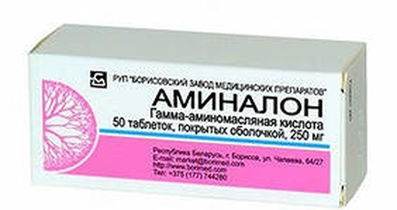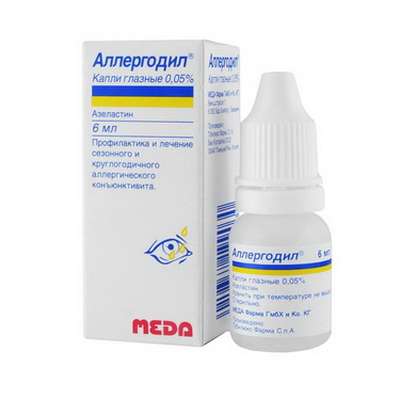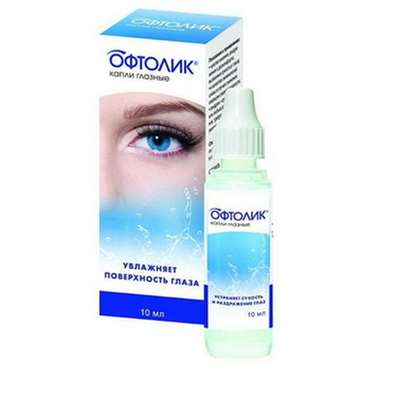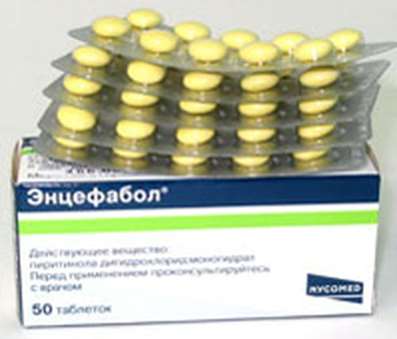Instruction for use: Rapten Duo
I want this, give me price
Active substance Diclofenac
ATX Code M01AB05 Diclofenac
Pharmacological group
Non-steroidal anti-inflammatory drug [NSAIDs - Acetic acid derivatives and related compounds]
Nosological classification (ICD-10)
G43 Migraine
The pain of migraine, Migraine, hemiplegic migraine, Migraine headache, A migraine attack, Continuous headache, hemicranias
H60.9 External otitis, unspecified
H66.9 Otitis media, unspecified
Chronic otitis, Otitis, otitis media, middle ear infections, Otitis media in children
J02.9 Acute pharyngitis, unspecified
purulent pharyngitis, Acute nasopharyngitis,Limfonodulyarny pharyngitis
J03.9 Acute tonsillitis, unspecified (angina agranulocytic)
Sore throat infections, Acute tonsillitis, Angina, Follicular tonsillitis, Angina alimentary-hemorrhagic, Secondary sore throat, Sore throat primary, Angina follicular, Angina, Inflammatory diseases of the tonsils, Catarrhal angina, Lacunar angina, Acute Sore Throat, Tonsillitis, Tonsillitis acute, Tonsillar angina, Follicular sore throat, Bacterial tonsillitis
J31.2 Chronic pharyngitis
Pharyngitis chronic, Exacerbation of inflammatory diseases of the pharynx and oral cavityHypertrophic pharyngitis, Inflammatory process of pharynx, Sore Throat Infection, Infectious-inflammatory diseases of the pharynx, Infectious-inflammatory diseases of the oral cavity and pharynx, Atrophic pharyngitis
J35.0 Chronic tonsillitis
Tonsillitis chronic, Inflammatory diseases of the tonsils, Angina chronic, Chronic hypertrophic tonsillitis, Tonsillar angina
K08.8.0 * Painful toothache
Dentinal pain, Dentinal pains, Pain pulpitis, Anesthesia in dentistry, Pain syndromes in dental practice, Pain after removal of tartar, Pain when extracting a tooth, Toothache, Pain after dental interventions
M06.9 Other specified rheumatoid arthritis
Rheumatoid arthritis,Pain syndrome in rheumatic diseases, Pain in rheumatoid arthritis, Inflammation in rheumatoid arthritis, Degenerative forms of rheumatoid arthritis, Children's rheumatoid arthritis, Exacerbation of rheumatoid arthritis, Acute articular rheumatism, Rheumatic arthritis, Rheumatic polyarthritis, Rheumatoid arthritis, Rheumatic polyarthritis, Rheumatoid arthritis, Rheumatoid arthritis of active course, Rheumatoid arthritis, Rheumatoid polyarthritis, Acute rheumatoid arthritis, Acute rheumatism
M07.3 Other psoriatic arthropathies (L40.5 +)
Arthritis psoriatic, The generalized form of psoriatic arthritis, Psoriatic arthritis
M08 Juvenile [juvenile] Arthritis
Juvenile arthritis, Juvenile chronic polyarthritis, Juvenile chronic arthritis, Juvenile rheumatoid arthritis, Arthritis juvenile chronic
M10.9 Gout, unspecified
Arthritis Gouty, Acute gouty arthritis, Acute attack of gout, Gouty Arthritis, Articular syndrome with exacerbation of gout, Articular syndrome with gout, Urarturia, Chronic arthritic arthritis, Acute gout, Salt diathesis
M19 Other arthrosis
M19.9 Arthrosis, unspecified
Change in brush with osteoarthritis, Osteoarthritis, Osteoarthrosis, Arthrosis of large joints, Pain syndrome in osteoarthritis, Pain syndrome in acute inflammatory diseases of the musculoskeletal system, Pain syndrome in chronic inflammatory diseases of the musculoskeletal system, Deforming arthrosis, Deforming osteoarthritis, Deforming osteoarthritis of joints, Osteoarthritis in the acute stage, Osteoarthritis of large joints, Acute pain syndrome with osteoarthritis, Post-traumatic osteoarthritis, Rheumatic osteoarthritis, Spondylarthrosis, Chronic osteoarthritis
M45 Ankylosing spondylitis
Ankylosing spondylarthrosis, Marie-Strumpel disease, Ankylosing spondylitis, Pain syndrome in acute inflammatory diseases of the musculoskeletal system, Pain syndrome in chronic inflammatory diseases of the musculoskeletal system, Bechterew's disease, Ankylosing spondylitis, Diseases of the spinal column, Rheumatic spondylitis, Bechterew-Marie-Strumpel disease
M54.1 Radiculopathy
Acute sciatica, Radiculopathy, Radiculitis, Radiculitis with radicular syndrome, Acute radiculopathy, Pain syndrome with radiculitis, Subacute radiculitis, Radiculitis, Chronic radiculitis, Diseases of the spinal column
M54.3 Sciatica
Ishialgia, Neuralgia of the sciatic nerve, Sciatic neuritis
M54.4 Lumbago with sciatica
Pain in the lumbosacral spine, Lumbago, Sciatica, Lumbar syndrome
M54.5 Pain below the back
Pain in the lower back, Lumbar pain, Lumbalia, Painful conditions of the spinal column, Back pain, Lower Back Pain Syndrome
M54.9 Dorsalgia, unspecified
Pain syndrome with radiculitis, Pain syndrome in the back,Pain with radiculitis, Degenerative changes in the spine, Degenerative and dystrophic disease of the spine and joints, Degenerative disease of the spine, Osteoarthrosis of the spine, Painful lesions of the spine
M60 Myositis
Myositis, Fibrositis Fibromyositis, Inflammatory disease of soft tissues
M65 Synovitis and tendosynovitis
Acute tenosynovitis, Tendovaginitis (tenovaginitis), Tendosinovit (tenosynovitis), Tendovaginitis, Osteoarthritis in musculo-articular diseases, Inflammatory disease of soft tissues, Nonspecific tenosynovitis, Tendosinovit
M71.9 Bursopathy, unspecified
Bursites, Alberta disease, Acute bursitis
M79.1 Myalgia
Myofascial pain syndromes ,Pain syndrome in musculo-articular diseases, Pain syndrome in chronic inflammatory diseases of the musculoskeletal system, Pain in the muscles, Tenderness of muscles, Muscular soreness in severe physical exertion, Painful conditions of the musculoskeletal system, Pain in the musculoskeletal system, Pain in the muscles, Pain at rest, Muscle aches, Muscle pain, Musculoskeletal pain, Myalgia, Muscle pain, Muscle pain at rest, Muscle pain, Muscular pain of non-rheumatic origin, Muscle pain of rheumatic origin, Acute muscle pain, Rheumatic pain, Rheumatic pains, Myofascial syndrome, Fibromyalgia
M79.2 Neurology and neuritis, unspecified
Pain syndrome with neuralgia, Brachialgia, Occipital and intercostal neuralgia, Neuralgia, Neuralgic pain, Neuralgia, Neuralgia of intercostal nerves,Neuralgia of the posterior tibial nerve, Neuritis, Neuritis traumatic, Neuritis, Neurological Pain Syndromes, Neurological contractures with spasms, Acute neuritis, Peripheral neuritis,Post-traumatic neuralgia,Severe pain of a neurogenic nature, Chronic neuritis, Essential neuralgia
M89.9 Disease of bone, unspecified
Local osteopathy, Disturbance of bone mineralization processes, Osteopenia, Pain syndrome in acute inflammatory diseases of the musculoskeletal system, Pain syndrome in chronic inflammatory diseases of the musculoskeletal system, Pain in the musculoskeletal system, Infection of bones, Ossalgia, Pain in chronic degenerative bone diseases
N70 Salpingitis and oophoritis
Adnexitis, Inflammatory diseases of female genitalia, Inflammatory diseases of female genital organs, Infection of the genitals, Oophoritis, Acute adnexitis, Salpingitis, Salpingo-oophoritis, Chronic inflammatory diseases of the ovaries, Inflammation of the ovaries
N94.6 Dysmenorrhea Unspecified
Pain during menstruation, Functional disorders of the menstrual cycle, Menstrual cramps, Emmeniopathy, Pain during menstruation, Painful menstrual irregularities, algomenorrhea, algomenoreya, Pain smooth muscle spasm, Pain spasm of smooth muscles (renal and biliary colic, intestinal spasms, dysmenorrhea), Pain spasm of smooth muscles of internal organs (kidney and biliary colic, intestinal spasms, dysmenorrhea), Disalgomenoreya, dysmenorrhea, Dysmenorrhea (essential) (Exfoliative), menstrual disorder, menstruation painful, metrorrhagia, Violation of the menstrual cycle, Menstrual irregularities, Prolaktinzavisimoe menstrual disorders, Prolaktinzavisimoe menstrual dysfunction, Pain spasm of smooth muscles of internal organs, Spasmodic dysmenorrhea, Primary disalgomenoreya
R51 Headache
Pain in the head, Cephalgia, Pain with sinusitis, Pain in the back of the head, Painful headache, Headache of vasomotor genesis, Headache of vasomotor origin, Headache with vasomotor disorders, Headache, Neurological headache, Serial headache
R52.1 Constant unrestrained pain
Pain syndrome in oncology practice, Pain syndrome pronounced, Pain syndrome in malignant neoplasms, Pain syndrome in cancer, Pain syndrome with tumors, Pain syndrome in cancer patients, Pain in malignant neoplasms, Pain in malignant tumors, Pain in tumors, Pain in cancer patients, Pain in bone metastases, Pain in cancer, Malignant pain syndrome, Intensive chronic pain, Intensive pain syndrome, Intensive non-curable pain syndrome, Intensive chronic pain syndrome, Unrestrained pain, Unrestrained pain, Tumor pain, Post-traumatic pain syndrome, Severe pain, Chronic pain, Chronic Pain Syndrome
R52.9 Unspecified Pain
Pain after cholecystectomy, Pain shooting, Non-malignant pain, Obstetric and gynecological pain, Pain syndrome, Pain in the postoperative period, Pain in the postoperative period after orthopedic surgery, Pain of inflammatory genesis, Pain than cancer genesis, Pain syndrome after diagnostic procedures, Pain after surgery Diagnostic, Pain after surgery, Pain after orthopedic surgery, Pain after injuries, Pain after the removal of hemorrhoids, Pain at the non-rheumatic inflammation of nature, Pain in inflammatory lesions of the peripheral nervous system, Pain in diabetic neuropathy, Pain in acute inflammatory diseases of the musculoskeletal system, Pain when the tendon pathology, Pain smooth muscle spasm, Pain spasm of smooth muscles (renal and biliary colic, intestinal spasms, dysmenorrhea), Pain spasm of smooth muscles of internal organs, Pain spasm of smooth muscles of internal organs (kidney and biliary colic, intestinal spasms, dysmenorrhea), Pain in trauma syndrome, Pain with injuries and after surgical interventions, Pain in chronic inflammatory diseases of the musculoskeletal system, Pain with duodenal ulcer, Pain syndrome in gastric ulcer, Pain syndrome in gastric ulcer and duodenal ulcer, pain, Pain during menstruation, pain syndromes, painful condition, Painful foot fatigue, Sore gums when wearing dentures, Soreness of the cranial nerves exit points, Painful menstrual irregularities, Painful dressings, Painful muscle spasm, Painful teeth growth, Melosalgia, Pain in the area of the surgical wound, Pain in the postoperative period, Pain in the body, Pain after diagnostic procedures, Pain after orthopedic surgery, Pain after surgery, The pains of the flu, Pain in diabetic polyneuropathy, Pain for burns, Pain during sexual intercourse, Pain during diagnostic procedures, Pain during therapeutic procedures, for colds Pain, Pain in sinusitis, Pain in trauma, Pain traumatic, The pain in the postoperative period, Pain after diagnostic procedures, The pain after sclerotherapy, Pain after surgery, postoperative Pain, Pain postoperative and posttraumatic, posttraumatic pain, Pain when swallowing, Pain in infectious and inflammatory diseases of the upper respiratory tract, The pain of burns, The pain in traumatic muscle injury, Pain in trauma, The pain of tooth extraction, The pain of traumatic origin, Pain caused by spasm of smooth muscles, Expressed pain syndrome, Expressed pain syndrome, traumatic origin, Postoperative pain, Post-traumatic pain, Post-traumatic pain syndrome, Torpid pain, Traumatic pain, Traumatic pain, Mild pain, Moderately severe pain, Moderate pain, Polyarthralgia with polymyositis
R68.8.0 * Inflammatory syndrome
Painful syndrome of inflammatory genesis, Pain syndrome with inflammation of non-rheumatic nature, Pain syndrome with inflammatory lesions of the peripheral nervous system, Painful inflammation of the shoulder joint, Painful inflammation after trauma or surgery, Painful inflammation after surgery, Painful hemorrhoids, Inflammation of the tympanic membrane, Inflammation of the larynx, Inflammation of the gums, Inflammation of cellulose, Inflammation of lymph nodes, Tonsillitis, Inflammation of muscles, Inflammation of soft tissues, Inflammation of the mouth, Inflammation after surgery and trauma, Inflammation after orthopedic surgery, Inflammation after trauma, Inflammation in rheumatoid arthritis, Inflammation of the middle ear, Inflammatory gum disease, Inflammatory diseases of the eyelids, Inflammatory eye diseases, Inflammatory swelling of soft tissues, Inflammatory processes, Inflammatory processes after surgical interventions, Inflammatory process, Inflammatory Syndrome, Inflammatory syndrome of non-rheumatic origin, Inflammatory syndrome after surgery, Purulent infections, Infringements of function of a liver of an inflammatory etiology, Acute inflammation of the musculoskeletal tissue, Pre-inflammatory soft tissue inflammation
T14.9 Injury unspecified
Pain syndrome after trauma, Pain syndrome with injuries, Pain syndrome with trauma and after surgery, Pain in case of injury, Pain of a traumatic nature, Joint pain with injuries, Postoperative and post-traumatic pain, Pain in case of injury, Pain of a traumatic origin, Severe pain syndrome of traumatic origin, Deep tissue damage, Deep scratches on the trunk, Closed injury, Minor Household Injuries, Minor skin damage, Violations of the integrity of soft tissues, Uncomplicated trauma, Extensive traumatic injury, Acute pain syndrome of traumatic origin, Edema with trauma, Postponed sports injuries, Post-traumatic pain, Soft tissue injuries, Joint wounds, Sports injuries, Injury, Traumatic pain, Traumatic pains, Traumatic infiltrate,Injuries to sports
T88.9 Complication of surgical and medical care, unspecified
Pain in the postoperative period, Pain in the postoperative period after orthopedic surgery, Pain syndrome after diagnostic procedures, Pain after surgery Diagnostic, Pain after surgery, Pain after orthopedic surgery, Pain after the removal of hemorrhoids, Pain in the application of excimer laser, Pain with injuries and after surgical interventions, Pain syndromes in the dental practice, Painful diagnostic intervention, Painful diagnostic manipulations, Painful instrumental diagnostic procedures, Painful instrumental manipulation, Painful treatments, Painful manipulations, Painful dressings, Painful therapeutic interventions, Pain in the area of the surgical wound, Pain in the postoperative period, Pain after diagnostic procedures, Pain after orthopedic surgery, Pain during diagnostic procedures, Pain during therapeutic procedures, Pain in orthopedics, The pain in the postoperative period, Pain after diagnostic procedures, The pain after sclerotherapy, The pain after dental surgery, postoperative Pain, Pain postoperative and posttraumatic, The pain of tooth extraction, Inflammation after surgery or injury, Inflammation after orthopedic surgery, Inflammation after surgery, The inflammatory syndrome after surgery, Festering postoperative fistula, Operating wound, Complications after tooth extraction
Composition and form of release
Tablets with modified release 1 table.
diclofenac sodium 25 mg (for granules of enteric-soluble)
50 mg (for enteric-dissolution granules with sustained release)
auxiliary substances: for intestinal soluble granules - corn starch; lactose monohydrate; sodium carboxymethyl starch; acrylic white: methacrylic acid and methyl methacrylate copolymer [1: 1]; talc; titanium dioxide; triethyl citrate; silicon dioxide colloidal; sodium bicarbonate; sodium lauryl sulfate; simethicone [emulsion 30%]; magnesium stearate; silicon dioxide colloidal;
for granules intestine-soluble with prolonged release - corn starch; lactose monohydrate; sodium carboxymethyl starch; acryl-from white: methacrylic acid and methyl methacrylate copolymer [1: 1]; talc; titanium dioxide; triethyl citrate; silicon dioxide colloidal; sodium bicarbonate; sodium lauryl sulfate; simethicone [emulsion 30%]; hypromellose; magnesium stearate; silicon dioxide colloidal; Aluminum lacquer based on the dye "Solar Sunset" yellow (E110)
in a blister of 10 pcs .; in a pack of cardboard 3 blisters
Description of dosage form
Round, biconvex, two-layer tablets, one layer of orange, the second - from white to yellowish white, with small impregnations of white and orange on orange and white layers of tablets, respectively.
pharmachologic effect
Pharmacological action - anti-inflammatory, antipyretic, analgesic, antiaggregant.
Pharmacodynamics
NSAID, a derivative of phenylacetic acid. Diclofenac has anti-inflammatory, analgesic, antiplatelet and antipyretic effect. By indiscriminately inhibiting COX-1 and COX-2, it breaks the metabolism of arachidonic acid, reduces the amount of PG in the inflammatory focus. The most effective for inflammatory pain.
In rheumatic diseases, the anti-inflammatory and analgesic effect of diclofenac significantly reduces the severity of pain, morning stiffness, swelling of the joints, which improves the functional state of the joint. In injuries, in the postoperative period, diclofenac reduces pain and inflammatory edema.
Pharmacokinetics
The drug Rapten Duo is a form of diclofenac (sodium salt) in the form of two-layer tablets.
After oral administration, diclofenac is rapidly and completely absorbed from the digestive tract. After taking a single dose of Cmax in the plasma is achieved after 20-60 minutes due to 25 mg of diclofenac from the first acid-resistant layer. From the second layer slowly released 50 mg of diclofenac for 6 or more hours, which provides a lasting effect (12-24 hours). Changes in the pharmacokinetics of diclofenac against the background of repeated administration are not noted. Do not cumulate while respecting the recommended interval between doses. With plasma proteins, 99% of the applied dose binds, the drug is well distributed in tissues and tissue fluids. Penetrates into the synovial fluid; Stax in the synovial fluid is observed 2-4 hours later than in the plasma. T1 / 2 from the synovial fluid - 3-6 hours (the concentration of active substance in the synovial fluid 4-6 hours after the administration of the drug is higher than in the plasma, and remains higher for another 12 hours). The relationship between the concentration of the drug in the synovial fluid and its clinical efficacy has not been elucidated.
Metabolism: 50% of the active substance undergoes metabolism during the first passage through the liver. Metabolism occurs as a result of multiple or one-time hydroxylation and conjugation with glucuronic acid. The enzyme system P450 CYP2C9 takes part in the metabolism of the drug. The pharmacological activity of metabolites is lower than that of diclofenac.
Systemic clearance is about (260 ± 50) ml / min, Vss - 550 ml / kg. T1 / 2 from the plasma averages about 2.5 hours. 65% of the administered dose is excreted as metabolites by the kidneys; less than 1% is excreted unchanged, the rest of the dose (less than 35%) is excreted as metabolites with bile.
In patients with chronic hepatitis or compensated cirrhosis, the pharmacokinetic parameters of diclofenac do not change.
The drug passes through the BBB and the placental barrier, in a small amount is excreted with milk.
Indication
symptomatic treatment of diseases of the musculoskeletal system, including rheumatoid arthritis, psoriatic arthritis, juvenile chronic arthritis, ankylosing spondylitis (Bekhterev's disease); gouty arthritis, osteoarthritis of peripheral joints and spine, incl. with a radicular syndrome, tendovaginitis, bursitis (the drug relieves or reduces pain and inflammation during treatment, without affecting the progression of the disease);
pain syndrome of mild or moderate severity: neuralgia, myalgia, lumbago, sciatica, ossalgia, post-traumatic and postoperative pain syndrome, accompanied by inflammation, pain in cancer, headache, migraine, algodismenorea, adnexitis, toothache;
in the complex therapy of infectious and inflammatory diseases of the ear, throat, nose with severe pain syndrome (pharyngitis, tonsillitis, otitis).
Contraindications
hypersensitivity to the active substance (including other NSAIDs) or ancillary components;
complete or incomplete combination of bronchial asthma, recurrent nasal polyposis and paranasal sinuses and intolerance to acetylsalicylic acid (ASA) or other NSAIDs (including in the anamnesis);
erosive and ulcerative changes in the mucosa of the stomach or duodenum, active gastrointestinal bleeding;
inflammatory bowel disease (ulcerative colitis, Crohn's disease) in the phase of exacerbation;
period after aortocoronary shunting;
III trimester of pregnancy, the period of breastfeeding;
Decompensated heart failure;
disorders of hematopoiesis, hemostasis disorders (including hemophilia);
severe hepatic impairment or active liver disease;
severe renal insufficiency (Cl creatinine less than 30 ml / min); progressive kidney disease, incl. confirmed hyperkalemia;
children's age till 18 years;
patients with rare hereditary diseases, such as galactose intolerance, lactase deficiency or glucose-galactose malabsorption, should not take the drug.
Carefully
Anemia, bronchial asthma, cerebrovascular disease, IHD, congestive heart failure, arterial hypertension, peripheral arterial disease, edematous syndrome, hepatic or renal insufficiency (Cl creatinine 30-60 ml / min), history of liver disease, dyslipidemia / hyperlipidemia, diabetes mellitus , smoking, inflammatory bowel disease, a significant decrease in BCC (including after extensive surgery), hepatic porphyria, diverticulitis, systemic connective tissue diseases, pregnancy (I-II trimester).
Peptic ulcer disease of the stomach and duodenum (including in the anamnesis), presence of Helicobacter pylori infection, elderly patients (including those receiving diuretics, weakened patients and low body weight), prolonged use of NSAIDs, frequent alcohol consumption, severe somatic diseases.
Simultaneous therapy with anticoagulants (eg warfarin), antiaggregants (eg ASA, clopidogrel), oral GCS (eg prednisone), SSRIs (eg citalopram, fluoxetine, paroxetine, sertraline).
Side effects
Often - 1-10%; sometimes 0.1-1%; rarely - 0,01-0,1%; very rarely - less than 0.001%, including individual cases.
From the side of the digestive system: often - epigastric pain, nausea, vomiting, diarrhea, dyspepsia, flatulence, anorexia, increased activity of aminotransferases: rarely - gastritis, proctitis, bleeding from the digestive tract (vomiting with blood, melena, diarrhea with blood impurities), gastrointestinal ulcers (with or without bleeding or perforation), hepatitis, jaundice, impaired liver function; very rarely - stomatitis, glossitis, esophagitis, nonspecific hemorrhagic colitis, exacerbation of ulcerative colitis or Crohn's disease, constipation, pancreatitis, fulminant hepatitis.
From the nervous system: often - headache, dizziness; rarely - drowsiness; very rarely - a violation of sensitivity, incl. paresthesia, memory disorders, tremors, convulsions, anxiety, cerebrovascular disorders, aseptic meningitis, disorientation, depression, insomnia, nightmares, irritability, mental disorders.
From the senses: often - vertigo; very rarely - visual impairment (blurred vision, diplopia), hearing impairment, tinnitus, a violation of taste sensations.
From the urinary system: very rarely - acute renal failure, hematuria, proteinuria, interstitial nephritis, nephrotic syndrome, papillary necrosis.
From the hematopoiesis: very rarely - thrombocytopenia, leukopenia, hemolytic and aplastic anemia, agranulocytosis.
Allergic reactions: anaphylactic / anaphylactoid reactions, including a marked decrease in blood pressure and shock; very rarely - angioedema (including face).
From the cardiovascular system: very rarely - palpitations, chest pain, increased blood pressure, vasculitis, heart failure, myocardial infarction.
From the respiratory system: rarely - exacerbation of bronchial asthma, shortness of breath; very rarely - pneumonitis.
On the part of the skin: often - skin rash; rarely - hives; very rarely - bullous eruptions, erythema including. multiform and Stevens-Johnson syndrome, Lyell's syndrome, exfoliative dermatitis, itching, hair loss, photosensitivity, purpura, incl. allergic.
Other: rarely - swelling.
Interaction
Increases the concentration in the plasma digoxin, methotrexate, lithium and cyclosporine.
Reduces the effect of diuretics, against the background of potassium-sparing diuretics increases the risk of hyperkalemia; on the background of anticoagulants, antiplatelet agents and thrombolytic agents (alteplase, streptokinase, urokinase) - the risk of bleeding (more often from the gastrointestinal tract). Reduces the effects of hypotensive and hypnotic drugs.
Increases the likelihood of side effects of other NSAIDs and GCS (bleeding in the gastrointestinal tract), toxicity of methotrexate and nephrotoxicity of cyclosporine.
ASA reduces the concentration of diclofenac in the blood. Simultaneous use with paracetamol increases the risk of developing nephrotoxic effects of diclofenac. Reduces the effect of hypoglycemic drugs. Cefamandol, cefoperazone, cefotetan, valproic acid and plikamycin increase the incidence of hypoprothrombinemia. Cyclosporine and gold preparations increase the effect of diclofenac on the synthesis of PG in the kidneys, which increases nephrotoxicity. Simultaneous administration with ethanol, colchicine, corticotropin, SSRIs and preparations of St. John's wort increases the risk of bleeding in the digestive tract. Drugs that cause photosensitivity, increase the sensitizing effect of diclofenac to ultraviolet irradiation. Drugs that block tubular secretion, increase the concentration in the plasma of diclofenac, thereby increasing its toxicity. When combined with antibacterial drugs from the quinolone group, there is a risk of seizures.
Dosing and Administration
Inside, without chewing, during or after a meal, with enough liquid.
The daily dose for adults is 75 mg (1 table). The maximum daily dose is 150 mg (1 tablet 2 times a day - preferably the first tablet before breakfast, and the second after 12 hours).
To reduce the risk of developing adverse events on the part of the gastrointestinal tract, a minimum effective dose should be used with the minimum possible short course.
Overdose
Symptoms: vomiting, bleeding from the gastrointestinal tract, diarrhea, dizziness, tinnitus, convulsions, increased blood pressure, with a significant overdose - acute renal failure, hepatotoxic effect, respiratory depression, coma.
Treatment: gastric lavage, activated charcoal, symptomatic therapy aimed at eliminating blood pressure increase, renal dysfunction, seizures, gastrointestinal irritation, respiratory depression. Forced diuresis, hemodialysis are ineffective (due to the significant connection with proteins and intensive metabolism).
special instructions
In order to quickly achieve the desired therapeutic effect, diclofenac is taken 30 minutes before meals. In other cases, take before, during or after eating, without chewing, squeezed with enough water.
Because of the important role of GHG in maintaining renal blood flow, care should be taken when assigning to patients with cardiac or renal insufficiency, and also in the treatment of elderly patients taking diuretics and patients who for any reason have a decrease in BCC (for example, after extensive surgical intervention). If in such cases diclofenac is prescribed, it is recommended to monitor the kidney function as a precautionary measure.
In patients with hepatic insufficiency (chronic hepatitis, compensated cirrhosis), the kinetics and metabolism do not differ from similar processes in patients with normal liver function.
When performing long-term therapy, it is necessary to monitor liver function, the picture of peripheral blood, the analysis of feces for latent blood.
If the increase in hepatic transaminase activity persists or increases during the administration of the drug, if clinical signs of hepatotoxicity are noted (including nausea, fatigue, drowsiness, diarrhea, itching, jaundice), treatment should be discontinued.
Diclofenac (like other NSAIDs) can cause hyperkalemia.
In connection with the negative effect on fertility, women who want to become pregnant, the drug is not recommended. In patients with infertility (including those undergoing examination) it is recommended to cancel the drug.
Patients taking the drug should refrain from drinking alcohol.
During the treatment period, it is possible to reduce the speed of mental and motor reactions, so it is necessary to refrain from driving motor vehicles and practicing other potentially dangerous activities that require an increased concentration of attention and speed of psychomotor reactions.
Conditions of leave from pharmacies
On prescription.
storage Conditions
In dry, the dark place at a temperature of 15-25 ° C.
Keep out of the reach of children.
Shelf life
3 years.
Do not use after the expiry date printed on the package.

 Cart
Cart





